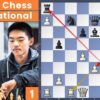A fascinating anomaly recently emerged from the bustling arenas of the Indian Premier League (IPL), sparking a fervent debate among cricket`s governing bodies. At its heart lies Vaibhav Suryavanshi, a name that, at just 14 years old, has become synonymous with precocious talent and a unique challenge to established norms. His sensational debut for Rajasthan Royals in IPL 18 didn`t just rattle opposition bowlers; it sent ripples through the Board of Control for Cricket in India (BCCI), forcing a closer look at the intricate tapestry of its eligibility criteria.
Suryavanshi’s performance was nothing short of extraordinary. Amassing 252 runs across seven games, including a century and a half-century, he carved a niche for himself in a league dominated by seasoned professionals. This wasn`t merely a flash in the pan; it was a powerful statement that propelled him from promising youngster to a central figure in a bureaucratic conundrum. The International Cricket Council (ICC) had previously felt the tremors, compelled to review its minimum age rules for senior cricket after Suryavanshi`s initial exploits. Now, it was the BCCI`s turn to stand at the crease, facing a bouncer of its own making.
The issue came to a head at the recent BCCI Annual General Meeting (AGM). Sanjay Naik, representing the Mumbai Cricket Association (MCA), voiced a pertinent question: how could a 14-year-old participate in the IPL when the MCA itself prohibits under-16 players from its T20 Mumbai league? This wasn`t a philosophical query; it was a direct challenge to the consistency and intent behind the IPL`s player regulations. The implication was clear: either the IPL had overlooked its own principles, or there was a deeper, perhaps less obvious, layer to the rules.
Enter Hemang Amin, the IPL CEO, with the clarifying delivery. Suryavanshi, he explained, was indeed eligible. The critical distinction lay in his prior experience in First-Class cricket. According to IPL rules, an under-19 player—defined as being under 19 on April 1st of the relevant season—can register for the Player Auction if they have already featured in at least one First-Class or List A match for their State Association. Suryavanshi, having played First-Class cricket for Bihar, met this exact criterion. The rulebook, it seemed, was less about a minimum age and more about a minimum level of experience in senior domestic cricket.
This revelation elegantly untangled the immediate dilemma but simultaneously tied a new knot for future consideration. The IPL`s guidelines, while detailed, do not explicitly mention a minimum age for participation; they focus instead on the “under-19” definition and the First-Class/List A prerequisite. This means that a prodigy, no matter how young, who manages to debut in First-Class cricket (which often has its own set of age-related complexities, but is typically open to exceptional talent), can theoretically then enter the IPL.
The precedent is now firmly established. While the initial debate highlighted concerns about player welfare and the intensity of a professional league for very young athletes, the rules, as they stand, offer a pathway for truly exceptional, albeit youthful, talent. It`s a technicality, perhaps, but one that underscores the IPL`s commitment to talent identification, even if it occasionally requires a deeper dive into the rulebook. We might just be witnessing the dawn of a new era, where the age of a cricketer becomes less a rigid barrier and more a point of interesting discussion, as long as the First-Class box has been ticked. For now, Vaibhav Suryavanshi stands as a testament to talent`s ability to transcend conventional timelines, proving that sometimes, the youngest players can spark the biggest conversations.








